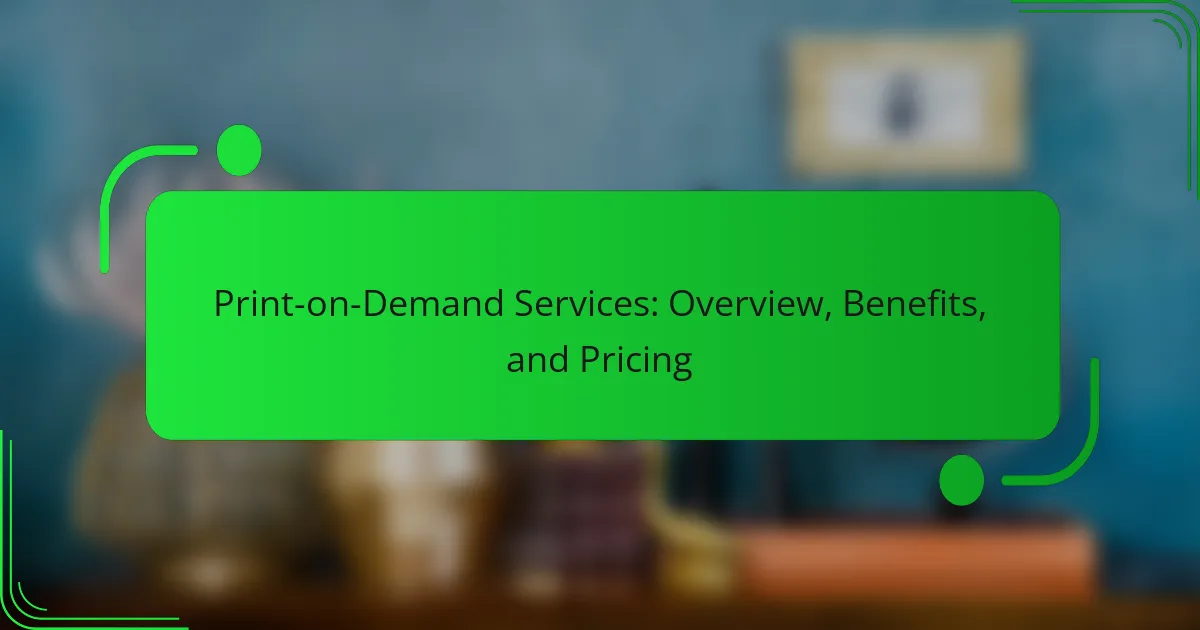Self-publishing tools enable authors to publish efficiently while maintaining control over their work. This article explores key features, associated costs, and user reviews of popular platforms like Amazon Kindle Direct Publishing, IngramSpark, and Draft2Digital. It also addresses challenges authors may face, including hidden costs and the learning curve of using these tools. Understanding these aspects can help authors choose the right platform for their publishing journey.

What are the essential features of self-publishing tools?
Self-publishing tools typically feature user-friendly interfaces, formatting options, distribution channels, and marketing support. These tools empower authors to publish efficiently and retain control over their work. Key features include cost-effectiveness, customization options, and analytics for tracking performance.
How do self-publishing tools streamline the publishing process?
Self-publishing tools significantly streamline the publishing process by automating tasks and providing user-friendly platforms. They simplify formatting, distribution, and marketing, allowing authors to focus on content creation. Key features include easy-to-use templates, direct access to multiple retailers, and integrated marketing tools. These attributes reduce time and effort, enabling faster publication and broader reach.
What formats do self-publishing tools support for distribution?
Self-publishing tools support various formats for distribution, including eBooks, print books, audiobooks, and PDFs. These formats cater to diverse reader preferences and platforms, enhancing accessibility. Popular eBook formats include EPUB and MOBI, while print options often encompass paperback and hardcover. Audiobooks are typically distributed in formats like MP3 or AAC.
Which tools offer the best editing and formatting capabilities?
Self-publishing tools with the best editing and formatting capabilities include Scrivener, Reedsy, and Vellum. Scrivener offers extensive formatting options and organizational features for writers. Reedsy provides professional editing services and user-friendly formatting templates. Vellum is known for its elegant formatting, particularly for eBooks and print. Each tool caters to different user needs, enhancing the self-publishing process.
How do self-publishing tools facilitate marketing and promotion?
Self-publishing tools enhance marketing and promotion by providing authors with essential resources to reach their target audience effectively. These tools include features like social media integration, email marketing capabilities, and analytics tracking, which help authors measure their outreach success.
Additionally, platforms often offer customizable templates for promotional materials, enabling authors to maintain a professional appearance. User reviews frequently highlight the ease of use and cost-effectiveness of these tools, making them accessible for both novice and experienced authors.
Moreover, some self-publishing tools provide unique attributes such as built-in audience engagement features, allowing authors to create direct connections with readers. This fosters community building and enhances promotional efforts.
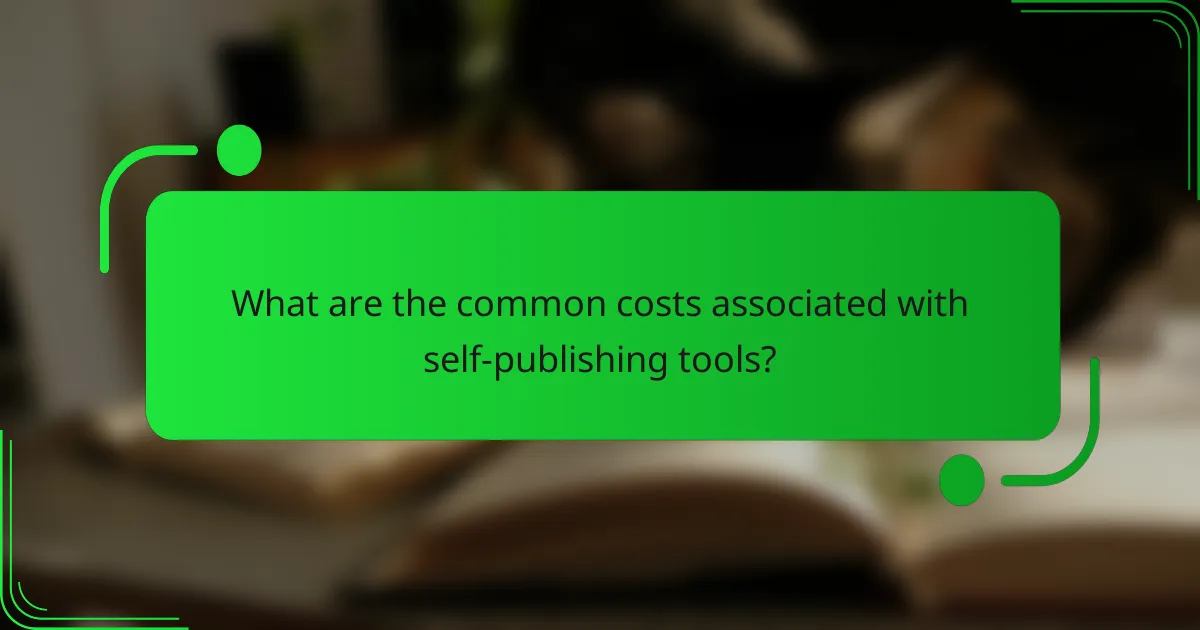
What are the common costs associated with self-publishing tools?
Self-publishing tools typically involve costs for software, printing, distribution, and marketing. Software can range from free to several hundred dollars, while printing costs depend on volume and quality. Distribution fees may apply for e-book platforms, and marketing expenses vary widely based on strategy.
How do pricing models vary among popular self-publishing platforms?
Pricing models for self-publishing platforms differ significantly. Some platforms charge upfront fees, while others take a percentage of sales. Popular options include Amazon Kindle Direct Publishing, which has no upfront costs and takes 30-70% royalties, and IngramSpark, which charges setup fees and offers a 45% discount on retail prices. Other platforms like Lulu and Smashwords have varying fee structures, often combining upfront costs with royalties. This diversity allows authors to choose a model that aligns with their financial goals and publishing strategies.
What additional costs should authors consider when using self-publishing tools?
Authors using self-publishing tools should consider various additional costs beyond the basic fees. These include editing services, cover design, formatting, marketing expenses, and distribution fees. Each of these costs can significantly impact the overall budget and should be planned accordingly. For example, professional editing can range from $500 to $2,000 depending on the manuscript’s length and complexity. Cover design may cost between $300 and $1,500, while marketing efforts can vary widely based on strategy and reach.
How can authors budget effectively for self-publishing expenses?
Authors can budget effectively for self-publishing by identifying key expenses and prioritizing them. Start by estimating costs for editing, cover design, formatting, and marketing. Allocate funds based on the importance of each element to the book’s success. Research tools and platforms that offer competitive pricing and user reviews to make informed decisions. Additionally, consider setting aside a contingency fund for unexpected expenses. This strategic approach can help authors manage their finances while achieving a professional outcome.
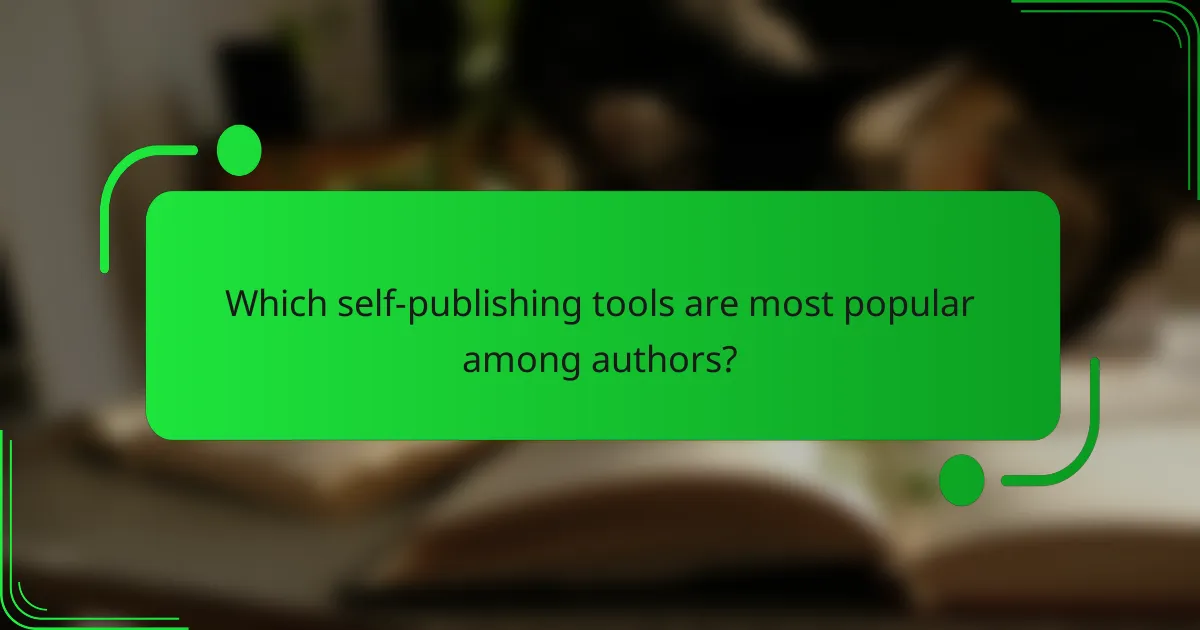
Which self-publishing tools are most popular among authors?
Popular self-publishing tools among authors include Amazon Kindle Direct Publishing, IngramSpark, and Draft2Digital. These platforms offer user-friendly interfaces, extensive distribution options, and varying costs.
Amazon Kindle Direct Publishing allows authors to publish eBooks and paperbacks for free, taking a percentage of royalties. IngramSpark provides wider distribution but charges setup fees, making it suitable for authors seeking extensive reach. Draft2Digital is known for its ease of use and offers free publishing, with a small cut from sales.
User reviews highlight Kindle Direct Publishing for its vast audience reach, while IngramSpark is praised for quality print options. Draft2Digital receives positive feedback for customer support and seamless formatting tools.
What are the user reviews for top self-publishing platforms?
User reviews for top self-publishing platforms vary widely, reflecting diverse user experiences and preferences. Many users praise platforms like Amazon Kindle Direct Publishing for its extensive reach and ease of use, while others highlight the creative control offered by platforms like IngramSpark. Some users express concerns about royalty structures or customer support, emphasizing the importance of researching each platform’s unique attributes before choosing. Ultimately, user satisfaction often hinges on specific needs such as distribution, formatting options, and pricing.
How do authors evaluate the effectiveness of different self-publishing tools?
Authors evaluate self-publishing tools by analyzing user reviews, costs, and features. They compare tools based on ease of use, distribution options, and marketing support. User feedback often highlights strengths and weaknesses, guiding authors in their selection. Additionally, authors may consider the unique attributes of each tool, such as customization options or royalty rates, to find the best fit for their publishing goals.
Which tools are preferred for specific genres or niches?
Self-publishing tools vary based on genre or niche. Writers of fiction often prefer Scrivener for its organizational features, while non-fiction authors might choose Canva for visually appealing layouts. Poets may opt for Reedsy for its editing services, and children’s book creators frequently use BookWright for its user-friendly design. Each tool addresses specific needs, enhancing the publishing process effectively.
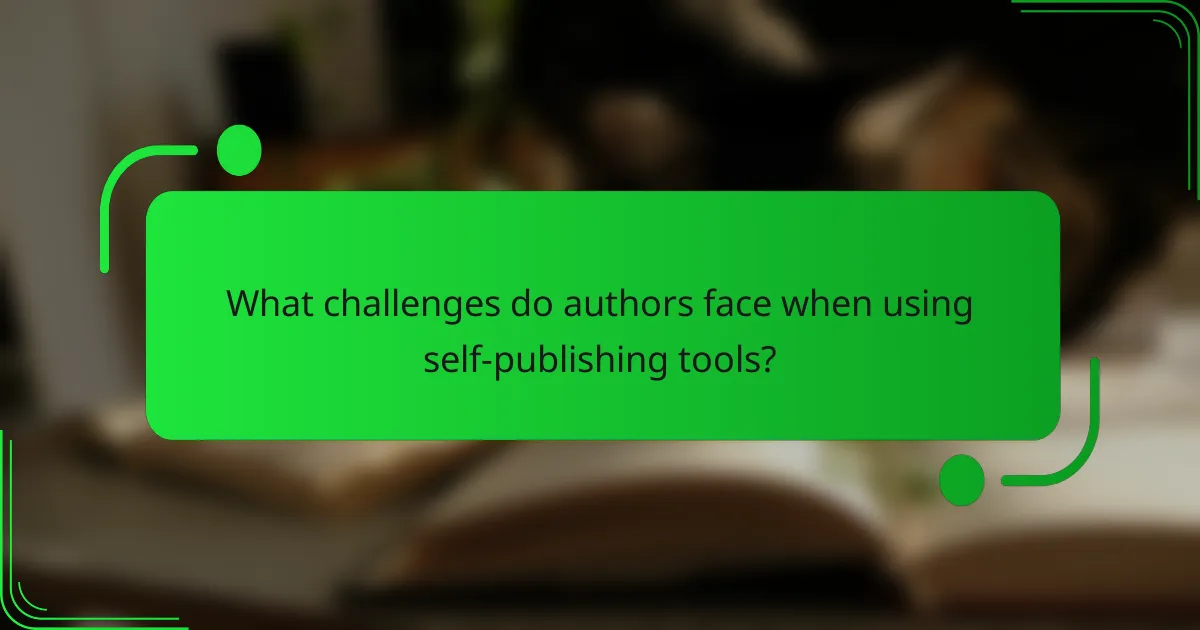
What challenges do authors face when using self-publishing tools?
Authors face several challenges when using self-publishing tools, including navigating complex interfaces, managing formatting issues, and understanding distribution options. Additionally, many tools come with hidden costs that can affect overall budgets. User reviews often highlight a steep learning curve and inadequate customer support as significant barriers. These factors can hinder the self-publishing process and impact an author’s success.
How can authors overcome technical difficulties with self-publishing platforms?
Authors can overcome technical difficulties with self-publishing platforms by utilizing user-friendly tools and seeking community support. Choosing platforms with robust customer service can also ease the process. Testing features before publishing helps identify potential issues early. Engaging with online forums offers solutions from experienced authors.
What are the common pitfalls to avoid in self-publishing?
Common pitfalls in self-publishing include inadequate editing, lack of a marketing plan, and ignoring formatting standards. Many authors underestimate the importance of professional editing, which can lead to poor reviews. Additionally, failing to create a comprehensive marketing strategy can result in low visibility and sales. Finally, neglecting proper formatting can affect the reading experience, leading to negative feedback.
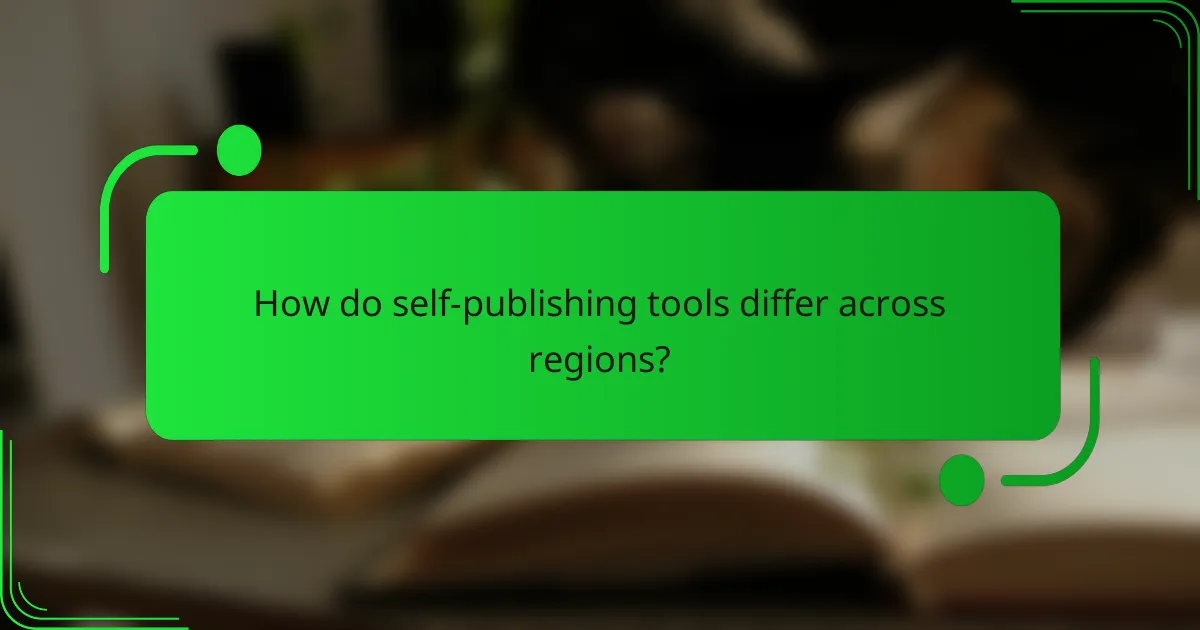
How do self-publishing tools differ across regions?
Self-publishing tools vary significantly across regions due to cultural preferences, market demands, and technological access. In North America, platforms like Amazon Kindle Direct Publishing dominate, offering extensive distribution and marketing tools. In Europe, localized platforms cater to specific languages and regional trends, while Asia often sees a mix of global and regional services reflecting diverse reading habits. Costs also differ, with North American tools generally requiring upfront fees or royalties, whereas some Asian platforms may offer free publishing options. User reviews highlight these differences, indicating varying levels of satisfaction based on regional support and features.
What unique features are found in self-publishing tools popular in different markets?
Self-publishing tools vary significantly across markets, each offering unique features tailored to local needs. For instance, tools in the U.S. often emphasize robust distribution networks and marketing support, while European platforms may focus on multilingual capabilities and compliance with regional regulations. In Asia, mobile-friendly interfaces and social media integration are more prevalent, catering to tech-savvy authors. Additionally, some platforms provide advanced analytics tools to track reader engagement, a feature that is becoming increasingly important in all markets.
How does user behavior vary in different regions regarding self-publishing?
User behavior regarding self-publishing varies significantly by region, influenced by cultural attitudes, technological access, and market preferences. For instance, North America exhibits a strong inclination towards digital self-publishing platforms due to high internet penetration and a robust indie author community. In contrast, regions like Asia may show a preference for print self-publishing, reflecting local reading habits and retail landscapes. Additionally, the costs associated with self-publishing tools and user reviews can differ, as users in Europe often prioritize quality over cost, while those in emerging markets may seek affordable options. Understanding these regional differences helps tailor self-publishing strategies effectively.

What best practices should authors follow when using self-publishing tools?
Authors should prioritize clarity, quality, and marketing when using self-publishing tools. First, choose a platform that aligns with your goals and budget. Next, ensure your manuscript is professionally edited to enhance readability. Utilize effective cover design tools, as an appealing cover attracts readers. Lastly, leverage marketing features provided by the platform to promote your book effectively.
How can authors maximize the benefits of self-publishing tools?
Authors can maximize the benefits of self-publishing tools by selecting the right platforms, leveraging marketing features, and utilizing analytics. Choosing a user-friendly platform with comprehensive features enhances the publishing experience. Authors should explore tools that offer marketing support, such as social media integration and email campaigns, to reach a wider audience. Utilizing analytics helps track sales and reader engagement, allowing for informed adjustments to strategies. By focusing on these aspects, authors can effectively enhance their self-publishing success.
What expert tips can improve the self-publishing experience?
Utilize these expert tips to enhance your self-publishing experience: choose the right platform based on your goals, invest in professional editing to improve quality, create an engaging cover design, and actively market your book through social media. Gathering user reviews can provide valuable feedback and increase credibility. Consider the costs associated with tools to ensure they fit your budget while maximizing your book’s potential.
What are common mistakes to avoid when using self-publishing tools?
Common mistakes include neglecting formatting, overlooking distribution options, and failing to proofread. Many self-publishers underestimate the importance of professional cover design and editing. Additionally, not researching target audiences can lead to ineffective marketing strategies. Setting unrealistic timelines can also hinder success.


